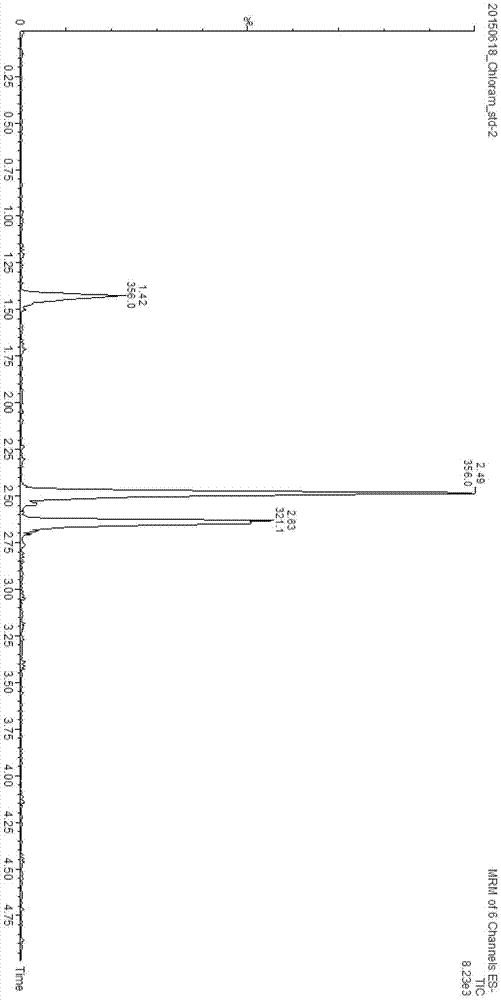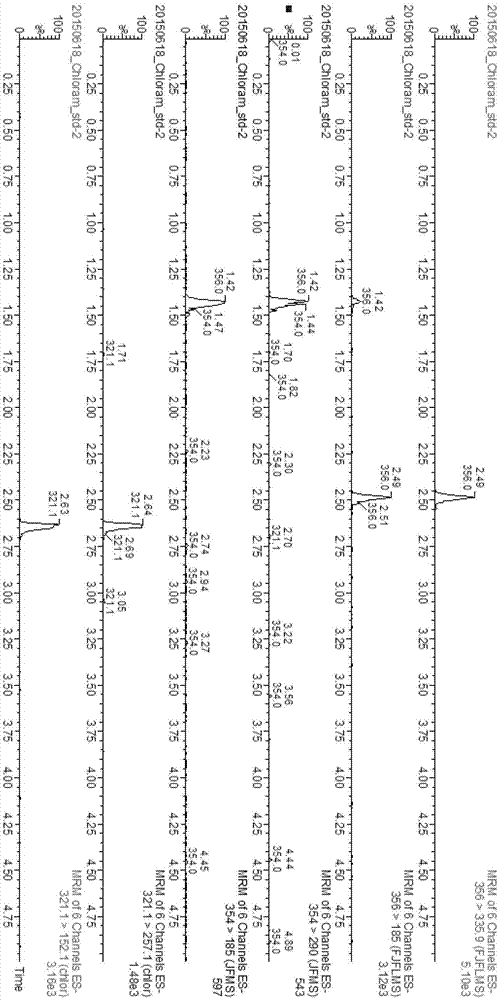Method for detecting residues of chloramphenicols in milk products
A detection method, the technology of chloramphenicol, applied in measuring devices, instruments, and material analysis through electromagnetic means, etc., can solve problems such as unavoidable emulsification of ethyl acetate, inaccurate detection, incomplete extraction of chloramphenicol, etc.
- Summary
- Abstract
- Description
- Claims
- Application Information
AI Technical Summary
Problems solved by technology
Method used
Image
Examples
Embodiment
[0028] 1. General method:
[0029] 1 sample processing
[0030] 1.1 Raw milk, fermented milk, sterilized milk, modified milk, pasteurized milk, milk beverages and other liquid dairy products
[0031] Weigh about 5.0 g of the sample (accurate to 0.01 g), add 15 mL of ethyl acetate, vortex for 1 min, then sonicate for 20 min, centrifuge at 10000 r / min for 10 min, take 7.5 mL of the supernatant and put it in a test tube, and store it at 40 °C ± Blow dry with nitrogen at 2°C. Dissolve in 0.5mL methanol, dilute with 5mL ultrapure water, vortex mix, then add 5mL n-hexane, vortex mix, centrifuge at 3000r / min for 2min, discard the upper layer of n-hexane, and extract the lower layer through HLB solid phase extraction Small column (activated with 3mL methanol and 3mL ultrapure water in advance), remove impurities with 5mL water when it dries quickly, and then dry it with a vacuum pump (or blow dry with an ear ball), add 6mL methanol to elute, and then use nitrogen gas 40 Blow dry at...
PUM
 Login to View More
Login to View More Abstract
Description
Claims
Application Information
 Login to View More
Login to View More - R&D
- Intellectual Property
- Life Sciences
- Materials
- Tech Scout
- Unparalleled Data Quality
- Higher Quality Content
- 60% Fewer Hallucinations
Browse by: Latest US Patents, China's latest patents, Technical Efficacy Thesaurus, Application Domain, Technology Topic, Popular Technical Reports.
© 2025 PatSnap. All rights reserved.Legal|Privacy policy|Modern Slavery Act Transparency Statement|Sitemap|About US| Contact US: help@patsnap.com



